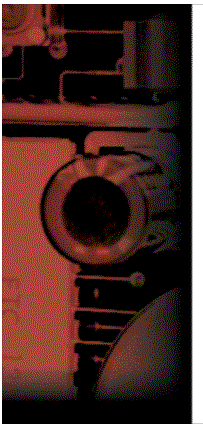  |
Updating Administration and Support Skills from Microsoft® Exchange Server 5.x to Microsoft Exchange 2000Table of Contents Introduction At Course Completion Microsoft Certified Professional Exams Prerequisites Course Materials and Software Course Outline IntroductionThis course will provide students with the knowledge and skills required to install and configure Microsoft® Exchange 2000 Beta 3. Students begin the course by reviewing the interaction of Exchange 2000 with Microsoft Windows® 2000 Active Directory™. Students then learn the component architecture of Exchange 2000 and install the product. Once Exchange 2000 is installed, students focus on the core management functionality, such as server, transport, and public folder management. The course wraps-up with a look at the new version of Microsoft Outlook™ Web Access and how Exchange 2000 supports real-time collaboration.At Course CompletionAt the end of the course, students will be able to:
Return to top Microsoft Certified Professional ExamsThere is no MCP exam associated with this course. The Trainer Assessment for this course is exam 209.Return to top PrerequisitesBefore attending this course, students must meet the following prerequisites:
Course Materials and SoftwareThe course materials are yours to keep.You will be provided with the following software for use in the classroom:
Return to top Course OutlineDay 1Module 1: Introduction to Microsoft Exchange 2000TopicsOverviewExchange 2000 Key Objectives Windows 2000 Integration Enhanced System Administration Reliable, Scalable Platform Unified Collaboration Platform SkillsStudents will be able to:
Module 2: Overview of Microsoft Windows 2000 Active DirectoryTopicsIntroduction to Active DirectoryLogical Structure Physical Structure Specific Domain Controller Roles Schema Fundamentals Security Subsystem SkillsStudents will be able to:
Module 3: Exchange 2000 Integration with Active DirectoryTopicsAdvantages of Integrating Exchange 2000 With Active DirectoryStorage of Exchange 2000 Data in Active Directory Other Services Provided by Windows 2000 Exchange 2000 Directory Access Implementing Groups in Active Directory LabsCreating Windows 2000 Users and GroupsSkillsStudents will be able to:
Module 4: Exchange 2000 ArchitectureTopicsOverview of the Exchange 2000 ArchitectureExchange 2000 Information Store Process Exchange 2000 Internet Information Services Exchange 2000 Events Exchange 2000 Message Flow SkillsStudents will be able to:
Day 2Module 5: Installing Microsoft Exchange 2000TopicsPreparing for an Exchange 2000 InstallationTypes of Installations Post-Installation Changes Common Installation Issues LabsInstalling Microsoft Exchange 2000SkillsStudents will be able to:
Module 6: Managing Recipient Objects in Exchange 2000TopicsPreparing for AdministrationTypes of Recipients Creating Users Creating Contacts Creating Distribution Lists Making Bulk Changes to the Directory LabsManaging Exchange 2000 Recipient ObjectsSkillsStudents will be able to:
Module 7: Managing Server Objects in Exchange 2000TopicsUsing Exchange System ManagerManaging Address Lists Managing Administrative Groups Creating Recipient Policies Using Exchange 2000 Policies LabsExploring the Exchange System ManagerCreating an Address List in Exchange 2000 Creating and Managing Administrative Groups Creating and Applying Exchange 2000 Policies SkillsStudents will be able to:
Day 3Module 8: Managing Virtual Servers and Protocols in Exchange 2000TopicsSupported Internet ProtocolsCreating Multiple Virtual Servers Simple Mail Transfer Protocol Post Office Protocol 3/Internet Mail Access Protocol 4 Hypertext Transfer Protocol Network News Transfer Protocol Scaling the Protocol Servers LabsCreating Virtual ServersSkillsStudents will be able to:
Module 9: Creating and Managing Routing Groups in Exchange 2000TopicsOverview of Message Routing in Exchange 2000Routing Groups Connecting Routing Groups Link State How Messages Are Routed Managing Routing Groups LabsCreating Routing Groups and RoutingGroup Connectors Creating an SMTP Connector SkillsStudents will be able to:
Module 10: Managing the Exchange 2000 Information StoreTopicsStorage GroupsStore Backup and Restore Strategies Full-Text Indexing LabsCreating Storage Groups and MultipleExchange 2000 Creating a Full-Text Index SkillsStudents will be able to:
Module 11: Creating and Managing Public Folders in Exchange 2000TopicsExchange 2000 Public Folders FeaturesCreating and Configuring Multiple Public Folder Trees Managing Public Folders Granting Permissions SkillsStudents will be able to:
Day 4Module 12: Deploying Exchange 2000 Outlook Web AccessTopicsIntroduction to Outlook Web AccessOutlook Web Access Architecture Outlook Web Access Deployment Extending Outlook Web Access LabsUsing Exchange 2000 Outlook Web AccessCreating and Managing Front-End Servers SkillsStudents will be able to:
Module 13: Real-Time Collaboration in Exchange 2000TopicsComparing Collaboration ComponentsIntroduction to Instant Messaging Instant Messaging Components Instant Messaging Dependencies on Windows 2000 Instant Messaging Client Operations Instant Messaging Server Operations Installing and Configuring Instant Messaging Monitoring Instant Messaging Instant Messaging Best Practices Chat Services Exchange Data Conferencing Services What is IP Multicast Conferencing? Exchange 2000 Data Conferencing Architecture Configuring Exchange Data Conferencing LabsConfiguring and Using Exchange 2000Instant Messaging Creating and Using Exchange 2000 Data Conferencing SkillsStudents will be able to:
Return to top
|